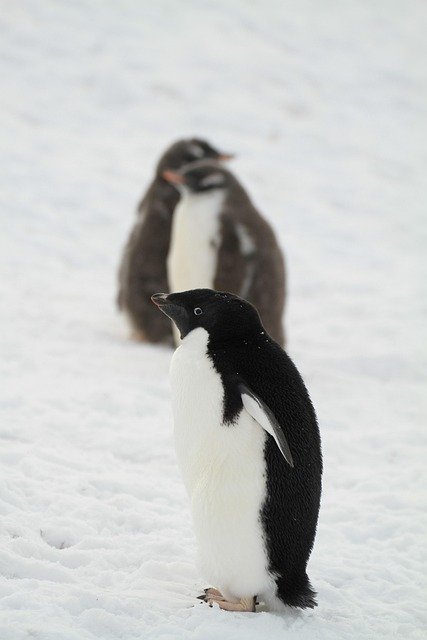**Title: "The Social Lives of Penguins: Understanding Their Unique Communication and Behavior"** **Overview

The Social Lives of Penguins: Understanding Their Unique Communication and Behavior
Penguins are one of the most fascinating and beloved groups of birds, known for their distinctive waddles and charming personalities. Beyond their adorable appearance, these flightless birds exhibit complex social behaviors and communication methods that are essential for their survival in the harsh environments they inhabit. In this post, we will explore the social lives of penguins, highlighting their unique communication styles, social structures, and behaviors that contribute to their success as a species.
Communication: The Language of Penguins
Penguins are highly social animals, and their communication is vital for maintaining social bonds and coordinating group activities. They use a variety of vocalizations, body language, and visual signals to convey messages to one another.
Vocalizations
- Calls: Each species of penguin has its own distinct set of calls, which they use for various purposes, such as attracting mates, signaling danger, or identifying each other within a colony. For instance, Emperor Penguins are known for their loud, trumpeting calls that can be heard over long distances.
- Chirps and Squawks: Penguins often use chirps and squawks to communicate with their chicks or to express excitement or agitation.
Body Language
- Postures: Penguins use specific postures to communicate their intentions. For example, puffing out their chests can signal dominance or readiness to mate.
- Displays: During courtship, male penguins may perform elaborate displays, including bowing and flapping their wings, to attract females.
Social Structures: The Penguin Community
Penguins are social creatures that thrive in colonies, which can range from a few dozen to several thousand individuals. These colonies provide protection from predators and help facilitate breeding and chick-rearing.
Hierarchies
- Dominance: Within a colony, there can be a social hierarchy, with dominant individuals often having priority access to resources such as food and nesting sites.
- Cooperation: Penguins often engage in cooperative behaviors, such as taking turns incubating eggs or sharing parenting duties, which strengthens social bonds within the group.
Social Interactions
- Grooming: Penguins frequently engage in mutual grooming, which helps maintain their feathers and strengthens social ties.
- Play: Young penguins, in particular, engage in playful behaviors, such as sliding on ice or chasing each other, which are crucial for developing social skills.
Behavior: Adaptations for Survival
Penguins exhibit a range of behaviors that are adapted to their environment and social structure. These behaviors are essential for their survival, especially in the face of harsh climates and the need to find food.
Foraging
- Group Foraging: Penguins often forage in groups, which increases their chances of finding food and provides safety in numbers from predators.
- Diving Techniques: Different species of penguins have developed unique diving techniques to catch fish and other prey, showcasing their adaptability.
Breeding and Parenting
- Nesting: Penguins typically return to the same breeding grounds each year, where they engage in elaborate courtship rituals to attract mates.
- Chick Rearing: After hatching, both parents are involved in feeding and protecting their chicks, demonstrating a strong commitment to family.
Conclusion
The social lives of penguins are a testament to their adaptability and resilience in some of the planet's most challenging environments. Through their unique communication methods, social structures, and behaviors, these remarkable birds have evolved to thrive in colonies, ensuring their survival and success. Understanding the intricate social dynamics of penguins not only deepens our appreciation for these charming creatures but also highlights the importance of conserving their habitats for future generations.
Feel free to share your thoughts or experiences with penguins in the comments below!
